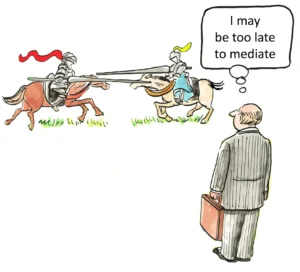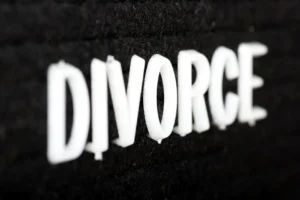DNA Evidence in Criminal Cases: Reliability and Challenges
The use of DNA evidence in criminal cases has revolutionized forensic science and the criminal justice system. Since its introduction in the 1980s, DNA analysis has become a powerful tool for both prosecutors and defense attorneys, offering unprecedented accuracy in identifying or exonerating suspects. However, while DNA evidence is often portrayed as infallible, it comes with its own set of challenges and limitations that must be carefully considered in legal proceedings.
At its core, DNA evidence relies on the unique genetic code present in every individual. By analyzing specific regions of DNA extracted from biological samples found at crime scenes, forensic scientists can create a genetic profile that can be compared to profiles of suspects or individuals in DNA databases. This process, known as DNA fingerprinting, has led to numerous convictions and exonerations, fundamentally changing how criminal investigations are conducted.
The reliability of DNA evidence stems from its scientific basis in molecular biology. Each person’s DNA is unique (with the exception of identical twins), and certain regions of DNA vary significantly between individuals. These variable regions, called short tandem repeats (STRs), are the focus of most forensic DNA analysis. By examining multiple STR locations, scientists can create a DNA profile that is extremely unlikely to match anyone other than the source of the original sample.
However, the process of collecting, analyzing, and interpreting DNA evidence is complex and subject to various potential sources of error. One of the primary challenges is contamination. DNA is microscopic and can easily be transferred between surfaces or individuals. Improper handling of evidence at a crime scene, in a laboratory, or during storage can lead to the introduction of extraneous DNA, potentially compromising the integrity of the evidence.
To mitigate the risk of contamination, strict protocols have been developed for the collection and handling of DNA evidence. Crime scene investigators must wear protective gear, use sterile collection tools, and carefully document the chain of custody for each piece of evidence. Similarly, forensic laboratories must adhere to rigorous quality control measures to prevent cross-contamination between samples and ensure the accuracy of their analyses.
Another significant challenge in the use of DNA evidence is the interpretation of mixed DNA samples. In many crime scenes, biological samples may contain DNA from multiple individuals. Separating and identifying individual profiles from these mixtures can be extremely complex, particularly when the contributors have contributed different amounts of DNA to the sample. Advanced statistical methods and software have been developed to assist in the interpretation of mixed samples, but these tools are not without controversy and can sometimes lead to conflicting conclusions.
The sensitivity of modern DNA analysis techniques presents both opportunities and challenges. On one hand, it allows for the detection and analysis of minute traces of DNA that would have been impossible to process in the past. This has led to breakthroughs in cold cases and the ability to solve crimes with limited physical evidence. On the other hand, this sensitivity also means that DNA can be detected in places where its presence may not be directly related to the crime in question. For example, touch DNA – genetic material left behind from skin cells when a person touches an object – can complicate investigations by introducing DNA profiles of individuals who may have had legitimate reasons for touching an item or being in a particular location.
The interpretation of DNA evidence in court requires careful consideration of statistical probabilities. When a DNA profile from a crime scene matches that of a suspect, forensic experts typically provide a statistical estimate of the likelihood of finding that particular profile in the general population. This is often expressed as a random match probability – the chance that a randomly selected individual would have the same DNA profile. While these probabilities can be extremely low (often in the billions or trillions to one), it’s crucial for judges and juries to understand that DNA evidence, like all forensic evidence, is probabilistic in nature and does not provide absolute certainty.
The use of DNA databases has significantly enhanced the power of DNA evidence in criminal investigations. The Combined DNA Index System (CODIS), maintained by the FBI, allows law enforcement agencies to compare DNA profiles from crime scenes against a database of profiles from convicted offenders and arrestees. While this has led to numerous cold case resolutions and identifications of serial offenders, it also raises privacy concerns and questions about the appropriate scope and use of such databases.
One of the most significant legal challenges related to DNA evidence is ensuring that defendants have access to the necessary resources to effectively challenge DNA evidence presented against them. DNA analysis is a complex and rapidly evolving field, and many defense attorneys may lack the scientific expertise to fully evaluate the strengths and weaknesses of DNA evidence. This has led to calls for increased funding for defense experts and independent laboratories to conduct their own analyses.
The admissibility of DNA evidence in court has evolved over time. Initially, courts grappled with how to evaluate the scientific validity of DNA analysis under the Frye standard, which required scientific evidence to be generally accepted in the relevant scientific community. As DNA evidence became more established, many jurisdictions shifted to the Daubert standard, which gives judges more discretion in evaluating the reliability and relevance of scientific evidence. Under Daubert, judges must consider factors such as whether the technique has been tested, subjected to peer review, has known error rates, and is generally accepted in the scientific community.
One area of ongoing debate is the use of probabilistic genotyping software in the analysis of complex DNA mixtures. These sophisticated computer programs use statistical models to calculate the likelihood ratios for different possible combinations of DNA contributors. While these tools can provide valuable insights, concerns have been raised about their proprietary nature, which can make it difficult for defense teams to fully evaluate their methods and reliability.
The potential for cognitive bias in DNA analysis has also received increased attention in recent years. Studies have shown that forensic analysts may be influenced by contextual information about a case, potentially leading to biased interpretations of ambiguous results. To address this, some laboratories have implemented blind testing procedures and sequential unmasking protocols, where analysts are provided with only the minimum necessary information to conduct their analysis.
Another emerging area of concern is the use of familial DNA searching. This technique involves searching DNA databases for partial matches that could indicate a close relative of the person who left DNA at a crime scene. While this method has led to high-profile arrests, it also raises significant privacy and ethical concerns, as it effectively places family members of individuals in DNA databases under genetic surveillance.
The rapid advancement of DNA technology continues to present new opportunities and challenges for the criminal justice system. Next-generation sequencing techniques promise even greater discriminatory power in DNA analysis, potentially allowing for the extraction of additional information from DNA samples, such as physical characteristics or biogeographic ancestry. However, the use of such information in criminal investigations raises complex ethical and legal questions that courts and legislators will need to grapple with.
The reliability of DNA evidence also depends on the quality and quantity of the sample available for analysis. Degraded or limited DNA samples, which are common in older cases or those involving challenging environmental conditions, can lead to incomplete or inconclusive results. Techniques such as low copy number (LCN) DNA analysis have been developed to work with extremely small amounts of DNA, but these methods are more prone to contamination and stochastic effects, potentially reducing their reliability.
The use of DNA evidence in exoneration cases has highlighted both the power of DNA technology and the fallibility of other forms of forensic evidence. Organizations like the Innocence Project have used DNA testing to overturn hundreds of wrongful convictions, many of which were based on less reliable forms of evidence such as eyewitness testimony or outdated forensic techniques. These cases have led to increased scrutiny of forensic science as a whole and calls for more rigorous scientific standards in the courtroom.
One of the challenges in evaluating DNA evidence is the potential for laboratory errors. While forensic laboratories adhere to strict quality control measures, mistakes can and do occur. These can range from simple clerical errors in labeling samples to more serious issues such as cross-contamination or misinterpretation of results. High-profile cases of laboratory misconduct or systemic errors have underscored the importance of regular audits, proficiency testing, and transparency in forensic DNA analysis.
The chain of custody for DNA evidence is crucial to its admissibility and reliability in court. Every step in the handling of a DNA sample, from its collection at the crime scene to its analysis in the laboratory and presentation in court, must be meticulously documented. Any breaks in this chain of custody can cast doubt on the integrity of the evidence and potentially render it inadmissible. Defense attorneys often scrutinize the chain of custody for any irregularities that could challenge the reliability of DNA evidence presented against their clients.
The use of rapid DNA technology, which allows for DNA analysis to be performed outside of traditional laboratory settings, presents new opportunities and challenges for law enforcement. These portable systems can provide DNA results in a matter of hours, potentially accelerating investigations and allowing for real-time DNA testing at crime scenes or booking stations. However, concerns have been raised about the accuracy of these systems and the potential for misuse if not properly regulated.
The intersection of DNA evidence and privacy rights continues to be a contentious issue. The collection of DNA samples from arrestees, even those not convicted of a crime, has been challenged on constitutional grounds. Courts have generally upheld these practices, but debates continue about the appropriate balance between public safety and individual privacy rights. Similarly, the use of genetic genealogy databases in criminal investigations, as exemplified by the Golden State Killer case, has raised new privacy concerns and questions about the ethical use of DNA data originally collected for non-forensic purposes.
The reliability of DNA evidence can also be affected by the statistical models used to calculate match probabilities. Different statistical approaches can lead to varying estimates of the rarity of a particular DNA profile in a population. The choice of reference population databases and assumptions about population genetics can also impact these calculations. It’s crucial for experts presenting DNA evidence in court to clearly explain the statistical methods used and their potential limitations.
The use of DNA evidence in cold cases has led to numerous breakthroughs but also presents unique challenges. The degradation of DNA over time can make analysis more difficult, and changes in collection and storage practices over the years may affect the reliability of older samples. Additionally, the resolution of long-unsolved cases through DNA evidence raises questions about statutes of limitations and the rights of defendants facing charges based on decades-old evidence.
The potential for secondary transfer of DNA has become an increasingly important consideration in evaluating DNA evidence. Studies have shown that DNA can be transferred between individuals or objects without direct contact, complicating the interpretation of DNA evidence found at crime scenes. This phenomenon underscores the importance of considering alternative explanations for the presence of DNA and not relying solely on DNA evidence to establish guilt or innocence.
The use of DNA evidence in sexual assault cases has been particularly impactful, but also raises specific challenges. The backlog of untested rape kits in many jurisdictions has highlighted systemic issues in the handling of DNA evidence. Efforts to clear these backlogs have led to numerous identifications and convictions, but have also raised questions about the prioritization of resources in forensic science and the handling of sensitive cases.
The reliability of DNA evidence can be affected by post-conviction DNA testing policies. Many jurisdictions have laws allowing for DNA testing of evidence after a conviction, but the implementation of these laws varies widely. Issues such as the preservation of biological evidence, the standards for granting DNA testing, and the interpretation of results in the context of other trial evidence continue to be debated in legal and policy circles.
The use of phenotypic DNA analysis, which attempts to predict physical characteristics from DNA samples, is an emerging and controversial area in forensic science. While this technology holds promise for generating leads in cases with unidentified suspects, it also raises concerns about racial profiling and the reliability of predictions based on complex genetic traits.
In conclusion, while DNA evidence has undoubtedly strengthened the criminal justice system’s ability to identify perpetrators and exonerate the innocent, its use is not without challenges. The complexity of DNA analysis, the potential for errors or misinterpretation, and the evolving nature of the technology require ongoing scrutiny and adaptation of legal and scientific practices. As DNA evidence continues to play a crucial role in criminal cases, it is essential for all stakeholders in the justice system – from forensic scientists and law enforcement to attorneys and judges – to maintain a nuanced understanding of its strengths and limitations. Only through careful consideration of the reliability and challenges associated with DNA evidence can we ensure its effective and just application in the pursuit of truth and justice.
Website citations:
- https://www.ncbi.nlm.nih.gov/pmc/articles/PMC5570689/
- https://www.americanbar.org/groups/criminal_justice/publications/criminal-justice-magazine/2018/spring/forensic-dna-evidence/
- https://www.nij.gov/topics/forensics/evidence/dna/pages/welcome.aspx
- https://www.innocenceproject.org/dna-exonerations-in-the-united-states/
- https://www.fbi.gov/services/laboratory/biometric-analysis/codis
- https://www.nature.com/articles/s41467-018-07740-7
- https://www.scientificamerican.com/article/when-dna-implicates-the-innocent/


















